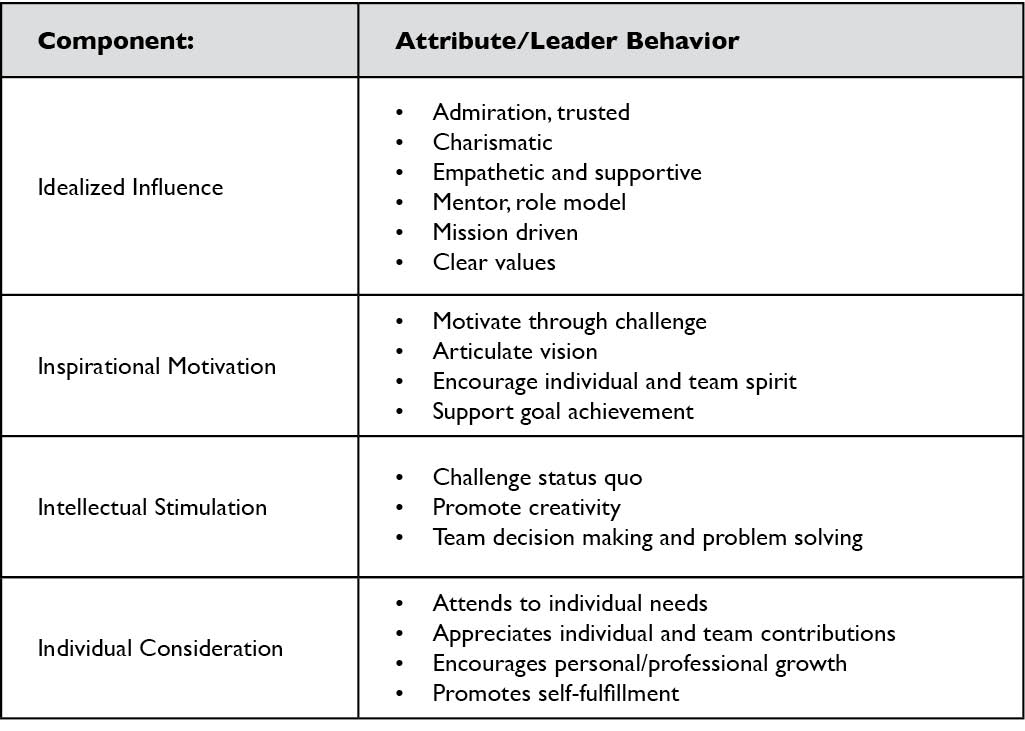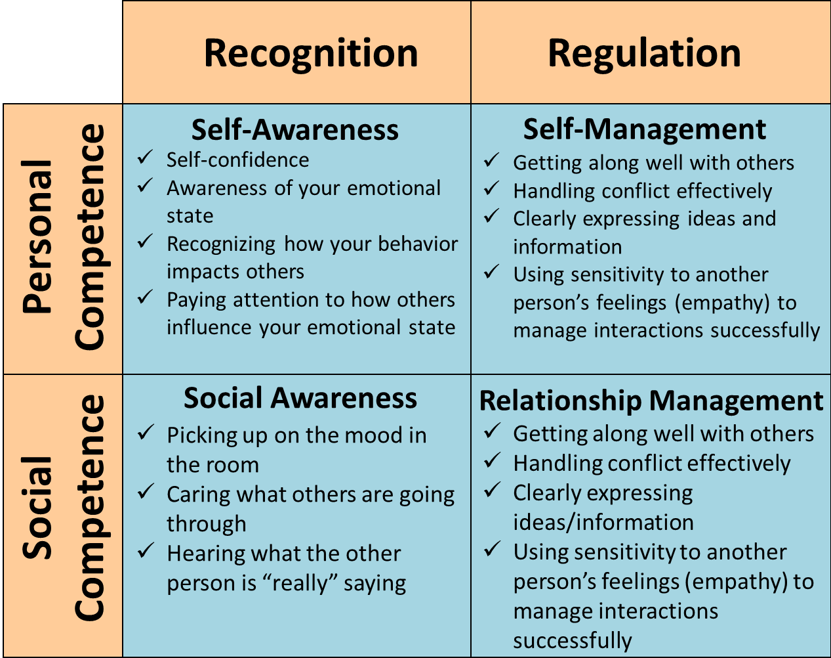Spano-Szekely, Griffin, Clavelle and Fitzpatrick (2016) performed a descriptive, exploratory research study demonstrating correlation between emotional intelligence and positive managerial behaviors characteristic of transformational leadership style. Most are familiar with transformational leadership, and it is widely regarded in nursing since adoption as a key component by the Magnet Recognition Program® in 2008.
Transformational leadership was originated by James Macgregor Burns in 1978. Burns notes leadership is distinguished by specific characteristics and traits and envisioned certain concepts of transactional leadership (specifically laissez-faire) and transformational leadership as opposite ends of the spectrum. Bernard Bass broadened the concept of transformational leadership in 1985 into the current understanding and includes four key components (with corresponding attributes described below):
Bass’s Components of Transformational Leadership

Spano-Szekely, Griffin, Clavelle and Fitzpatrick (2016) emphasize relationship focused leadership styles such as transformational leadership may lend themselves to improved staff satisfaction, retention, performance and outcomes. The study specifically correlates transformational leadership to staff satisfaction—a finding that is intuitive anecdotally to most any experienced nurse leader. The Nurse Manager plays a crucial role in staff satisfaction, and those leaders with higher levels of emotional intelligence may be likely to demonstrate transformational attributes such as supportive leadership. Educational and leader development programs can and should focus on bolstering transformational attributes of the Nurse Manager, and as this study suggests, we may need to identify a leaders’ level of emotional intelligence as an important aspect of any future leader.
What is Emotional Intelligence?
Emotional Intelligence (EI) is a term coined by Yale University psychologists Peter Salovey and Jack Mayer in 1990 (Druskat, Sala, & Mount, 2006). Salovey and Mayer define EI as:
…(a) the ability to perceive, appraise, and express emotion accurately; (b) the ability to
access and generate feelings when they facilitate cognition; (c) the ability to understand
affect-laden information and make use of emotional knowledge; and (d) the ability to regulate
emotions to promote emotional and intellectual growth and well-being… . (Druskat et al., 2006, pp. xxvii-xxviii)
The concept was further developed by Harvard psychologist Daniel Goleman in 1995 to include five key concepts of self-awareness, self-regulation, internal motivation, empathy, and social skills. In 2002, Goleman amended the components of EI to include self-awareness, self-management, social awareness, and relationship management. Within each component, there are additional behaviors and traits as demonstrated below:
Goleman’s (2002) components of EI

Seigling, Nielsen, and Petrides (2014) performed a study about “trait EI” in leaders and non-leaders, revealing leaders to have higher trait EI scores than non-leaders even when controlling for variables such as tenure, intelligence quotient, age, and gender. Lam and O’Higgins (2012) examined if transformational leadership style had a mediating effect between EI and employee outcomes including but not limited to job satisfaction. Indeed, job satisfaction was the only indicator that showed a relationship with manager EI, using transformational style as a mediator.



